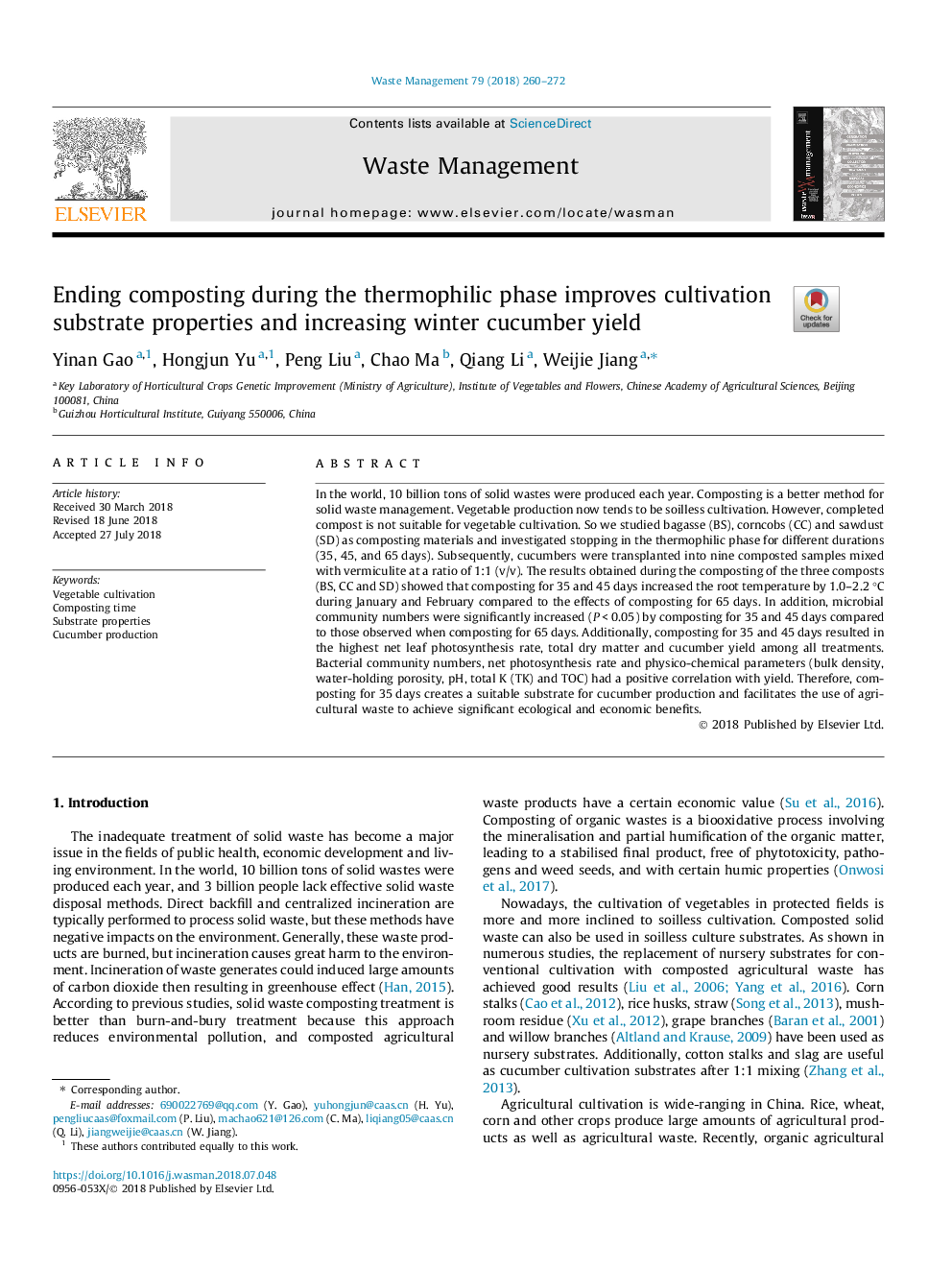| Article ID | Journal | Published Year | Pages | File Type |
|---|---|---|---|---|
| 11033298 | Waste Management | 2018 | 13 Pages |
Abstract
In the world, 10 billion tons of solid wastes were produced each year. Composting is a better method for solid waste management. Vegetable production now tends to be soilless cultivation. However, completed compost is not suitable for vegetable cultivation. So we studied bagasse (BS), corncobs (CC) and sawdust (SD) as composting materials and investigated stopping in the thermophilic phase for different durations (35, 45, and 65â¯days). Subsequently, cucumbers were transplanted into nine composted samples mixed with vermiculite at a ratio of 1:1 (v/v). The results obtained during the composting of the three composts (BS, CC and SD) showed that composting for 35 and 45â¯days increased the root temperature by 1.0-2.2â¯Â°C during January and February compared to the effects of composting for 65â¯days. In addition, microbial community numbers were significantly increased (Pâ¯<â¯0.05) by composting for 35 and 45â¯days compared to those observed when composting for 65â¯days. Additionally, composting for 35 and 45â¯days resulted in the highest net leaf photosynthesis rate, total dry matter and cucumber yield among all treatments. Bacterial community numbers, net photosynthesis rate and physico-chemical parameters (bulk density, water-holding porosity, pH, total K (TK) and TOC) had a positive correlation with yield. Therefore, composting for 35â¯days creates a suitable substrate for cucumber production and facilitates the use of agricultural waste to achieve significant ecological and economic benefits.
Related Topics
Physical Sciences and Engineering
Earth and Planetary Sciences
Geotechnical Engineering and Engineering Geology
Authors
Yinan Gao, Hongjun Yu, Peng Liu, Chao Ma, Qiang Li, Weijie Jiang,
